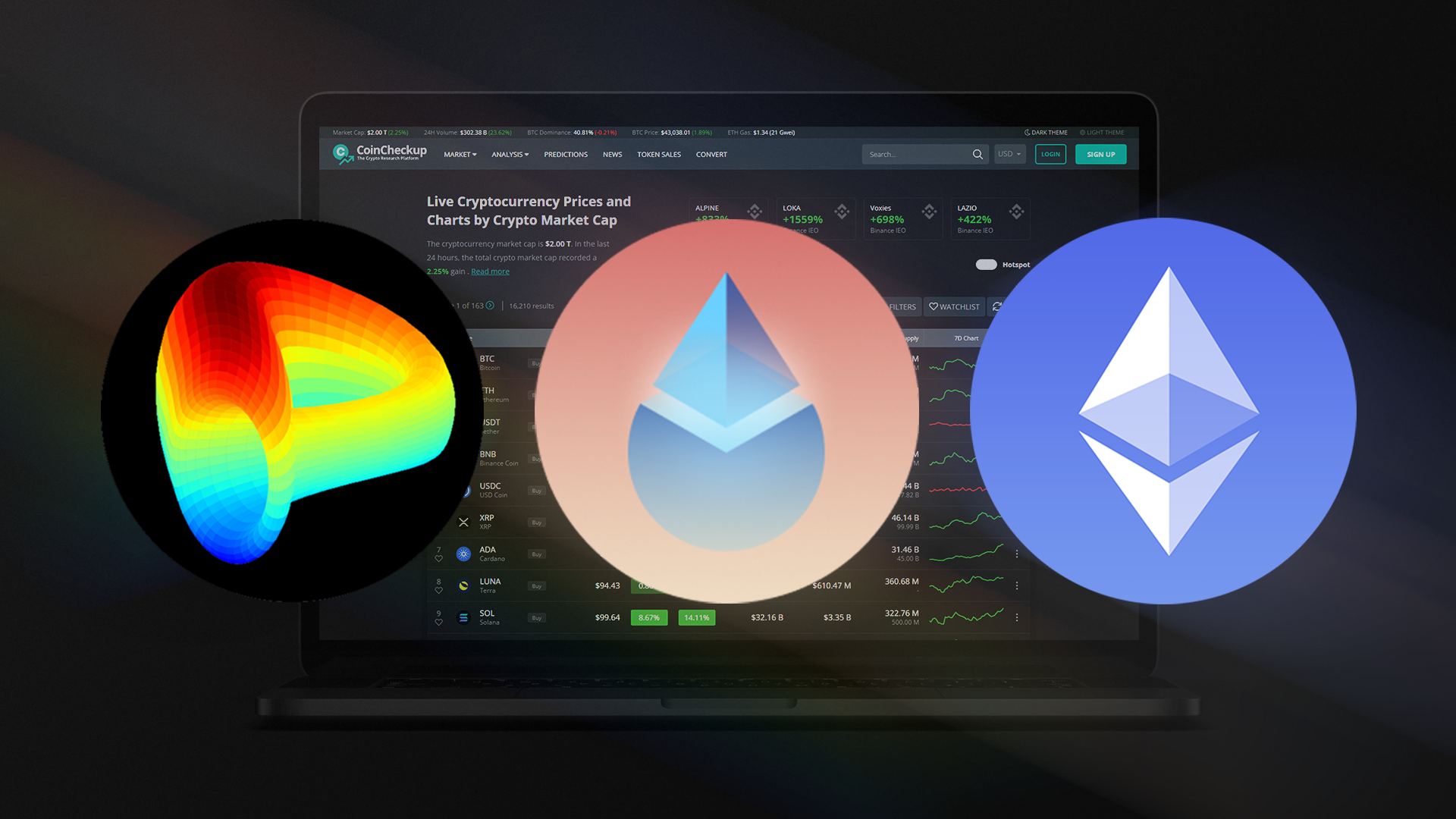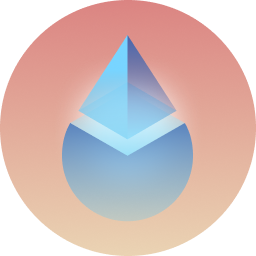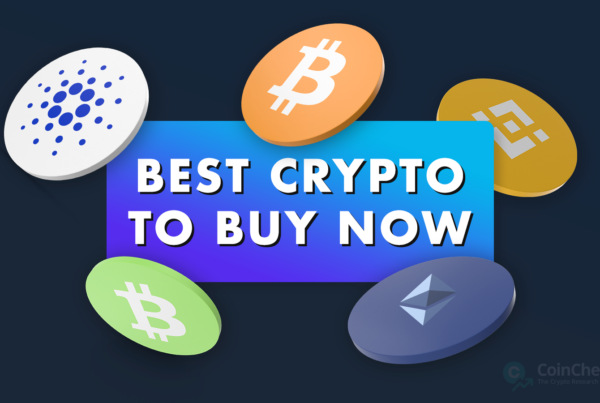
Last week the total cryptocurrency market valuation climbed from $995 billion to $1.08 trillion. The 8.5% increase in crypto market cap was most likely caused by the hype around the upcoming Ethereum Merge, which is the final step of Ethereum’s transition from Proof-of-Work (PoW) to Proof-of-Stake (PoS) consensus. ETH rallied by more than two times the market average, climbing from $1,365 on July 18 to $1,630 on July 25 (+19.4% price increase). As more developments concerning Ethereum are expected this week, Ethereum is our #1 coin to watch.

3. Curve DAO Token (CRV)
Curve is a decentralized trading protocol built on the Ethereum blockchain. The protocol aims to provide its users a simple and easy-to-use product for swapping Ethereum-based assets (primarily stablecoins and wrapped Bitcoin) with low slippage and minimal fees. Curve was developed by Russian scientist Michael Egorov. He launched Curve in January of 2020 and the platform quickly became one of the most used DEXes. The protocol uses a native token named Curve Dao Token (CRV) for decentralized governance as well as rewarding liquidity providers on CurveFinance.
Curve DAO Token jumps by 35% following Curve decentralized stablecoin launch announcement
The price of the platform’s native Curve DAO Token rallied on Friday, July 22 on the news of an upcoming launch of Curve’s decentralized stablecoin. While not all the details have been revealed yet, the Curve founder Michael Egorov did reveal that the CRV stablecoin $crvUSD will be an over-collateralized algorithmically governed stablecoin. Over-collateralized stablecoins are usually backed by backed by volatile assets like Bitcoin and other cryptocurrencies of a higher value than the issued stablecoin to defend the USD peg even in times of volatility surges. An example of such stablecoin is also Tron’s USDD, which launched in May this year and already has a market cap of $116 million. However, $crvUSD developers claim that their stablecoin will be revolutionary as it will feature a unique new liquidation mechanism not yet seen on any DeFi protocol. The interview certainly did lift some dust and caused a major hype driven surge. On Friday alone, CRV price quickly increased by 35% from $1.13 to $1.53. In the meantime, the price has already readjusted, erasing more than half of the Friday’s gains – as it is usually the case with hype-driven bull runs. Nevertheless, a launch of a native stablecoin will likely be beneficial for the protocol’s future growth and adoption in the longer term.

2. Lido DAO (LDO)
The Lido DAO is a Decentralized Autonomous Organization that manages the Lido staking service protocol by deciding on key parameters such as fees and incentives. Lido is currently the most popular staking protocol for Ethereum 2.0, Solana and Kusama, and the second largest DeFi service in terms of TVL, according to DeFi Llama. At the moment, Lido’s 3.9% APR on staked ETH, has attracted already more than 4,25 million ETH worth over $6.5 billion. For context, the total market cap of all ETH staked in the Ethereum 2.0 contract is around $20.0 billion, according to Staking Rewards. LDO is the governance token of the Lido DAO, granting its holders rights to vote on proposals of changes to the protocol.
Lido’s stETH will soon hit more L2 Chains
On Monday, July 18, the Lido protocol announced that the project is committed to making its staked tokens widely available throughout Ethereum Layer 2 chains. According to the official announcement, wrapped stETH was already deployed on Argent and will soon be made available on Arbitrum and Optimism.
Lido developers also highlighted that the protocol is network-agnostic and that they will do their best to bring their stETH to every sufficiently proven Layer 2 network with demonstrated economic activity. The expansion to various L2 networks will make Lido’s stETH widely available throughout Ethereum ecosystem, which will ultimately result in higher volumes handled by the Lido protocol. While no launch dates have been revealed yet, the platform’s LDO token already rallied – it is up by 180% in the past 30 days, which makes it the most profitable coin out of the crypto top 100 in this time frame. Nevertheless, much of the rally took place before the official announcement and is likely to be associated with the heavy growth of all Ethereum-focused projects. This could indicate that the effects of LDO’s launch on L2 chains announcement have not been priced in yet.

1. Ethereum (ETH)
Ethereum is an open source blockchain that pioneered smart contract functionality in 2015. The decentralized network operates in a fast, immutable, and trustless manner. Ether (ETH), which is currently the second-largest cryptocurrency by market capitalization, is Ethereum’s native asset. Although it can also be used as a medium for the transfer of value between different Ethereum addresses, it is more commonly used to execute various smart contracts. The Ethereum blockchain hosts countless ERC20 tokens with different utilities – these include Exchange tokens (OKB, HT, UNI), DeFi tokens (LINK, MKR, COMP, SNX, etc.) and several stablecoins such as USDC, DAI, TUSD, and USDT. Many Layer 2 blockchains including Polygon, Arbitrum, Loopring, Optimism, etc. operate on top of the L1 Ethereum mainnet. Ethereum is currently nearing the end of the process of transition from proof-of-work to a proof-of-stake blockchain. Once Ethereum 2.0 is fully launched, the network will be able to perform more transactions at a higher speed than today. Hopefully, this will also lower the network fees, which are a well-known Achilles’ heel of Ethereum ecosystem.
September 19 floated as a potential Date of the Mainnet Merge
After months of delays, Ethereum developers have finally outlined a date for “the Merge”, an event that will mark the competition of Ethereum’s transition from Proof-of-Work (PoW) to Proof-of-Stake (PoS) consensus. According to the statements of core Ethereum developers Tim Beiko and Superphiz.eth on the July 14th Consensus Layer Call, the Merge is currently planned to take place on September 19 provided the Goerli testnet merge planned for August 11 is successful. It should be highlighted that these are not official dates yet. The Merge could take place even 1 to 2 weeks sooner if the Dev ACD call is pushed to an earlier date. At the same time, the Merge could also be delayed again if the team stumbles upon bugs and vulnerabilities.
Nevertheless, the community and investors reacted very positively to the release of this “loose timeline” as they have been awaiting this event for more than 3 years. Consequently, the price of ETH, and native tokens of Ethereum-focused projects like Polygon and Lido DAO, surged on the news. In addition, Ethereum TVL has grown by almost 17% in the last 10 days. While this is most likely just a reflection of the higher valuations of ETH and Ethereum-based tokens, the TVL increase is a very welcoming change following multiple months of a downward TVL trend. Since Ethereum will likely be in the lime light of crypto community’s attention for the next two (or more) months, we suggest adding ETH to your crypto watchlist if you haven’t already.



